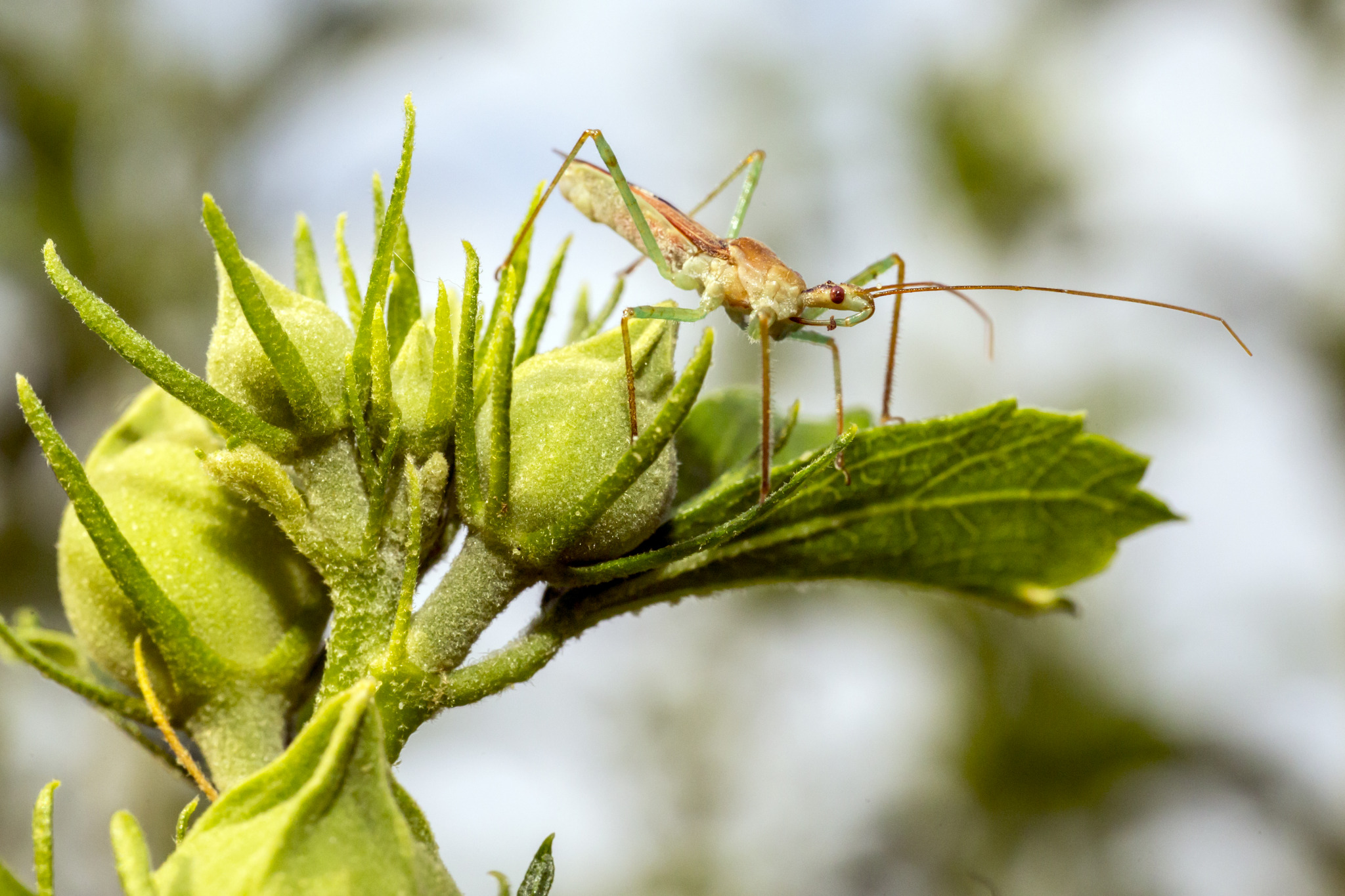The Leaf Hopper Assassin Bug (Zelus renardii) is a predatory insect belonging to the family Reduviidae, known for its effective hunting skills and beneficial role in controlling pest populations.
Description
- Appearance:
- Body: This bug has a slender, elongated body that typically measures about 12-15 millimeters in length.
- Color: It is usually green or brown, providing excellent camouflage among leaves and vegetation.
- Legs and Antennae: The legs are long and spindly, adapted for grasping prey, while the antennae are also long and segmented.
- Beak: It possesses a distinctive, curved beak (or rostrum), which it uses to pierce and inject digestive enzymes into its prey.
Habitat
- Distribution: Zelus renardii is native to the Americas, ranging from the southern United States through Central America and into parts of South America. It has also been introduced to other regions, including parts of Europe and Oceania.
- Preferred Environment: This species thrives in a variety of habitats, including gardens, agricultural fields, woodlands, and urban areas. It prefers environments with abundant vegetation where it can hunt.
Behavior and Ecology
- Diet:
- Predatory Nature: The Leaf Hopper Assassin Bug preys on a wide range of small insects, including leafhoppers, aphids, caterpillars, and other soft-bodied arthropods.
- Hunting Strategy: It uses a sit-and-wait approach, remaining motionless on vegetation until prey comes within reach. It then swiftly grabs the prey with its forelegs and injects it with saliva that liquefies the internal tissues for easy consumption.
- Life Cycle:
- Eggs: Females lay clusters of eggs on plant surfaces.
- Nymphs: The nymphs, which resemble smaller versions of adults but lack wings, undergo several molts before reaching maturity. Nymphs are also predatory and play a role in pest control.
- Adults: Adults continue to hunt and feed, contributing to the regulation of pest populations.
Conservation
- Status: The Leaf Hopper Assassin Bug is not considered threatened and is generally common within its range. Its adaptability to various environments and its role as a natural pest controller make it a valuable insect in many ecosystems.
- Conservation Efforts: No specific conservation efforts are needed for this species. However, maintaining natural habitats and reducing pesticide use can support their populations and enhance their ecological role.
Observing Leaf Hopper Assassin Bugs
- Best Times: These bugs can be observed throughout the growing season, particularly during warm months when prey is abundant.
- Watching Tips: Look for them on plants where they may be hunting or resting. They are often well-camouflaged, so careful observation is needed to spot them.
Interesting Facts
- Beneficial Insect: Zelus renardii is considered beneficial in agricultural and garden settings due to its predation on pest insects, reducing the need for chemical pesticides.
- Venomous Saliva: The saliva of the Leaf Hopper Assassin Bug contains potent enzymes that immobilize and digest prey, highlighting its specialized predatory adaptations.
- Camouflage: Its coloration and body shape allow it to blend seamlessly with foliage, making it an effective ambush predator.
Summary
The Leaf Hopper Assassin Bug (Zelus renardii) is a remarkable predatory insect known for its effective pest control capabilities. Its presence in gardens and agricultural areas is beneficial, as it helps manage populations of harmful insects. With its specialized hunting adaptations and ecological significance, Zelus renardii plays a crucial role in maintaining the balance of various ecosystems. Observing this bug provides insight into the complex interactions between predators and prey in the natural world.
Visited 293 times, 6 visit(s) today
Views: 586
Subscribe to the newsletter:
